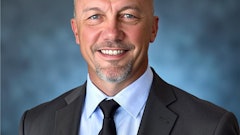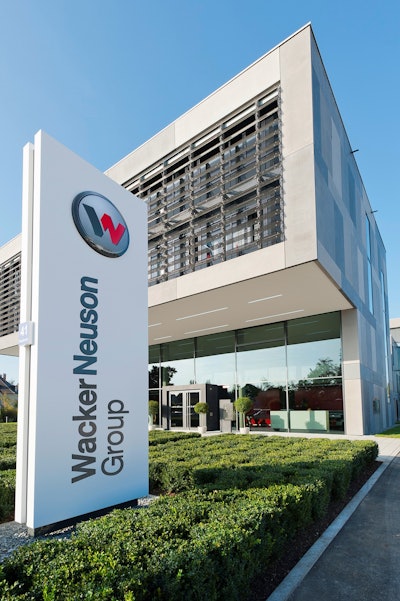
International light and compact equipment manufacturer Wacker Neuson reported a significant rise in revenue and earnings for 2017 relative to the previous year and was able to achieve the goals it set itself. Guided by its “Strategy 2022” roadmap, the group is systematically aligning itself with customer needs. Topics such as digitalization and Service 4.0 are key focus areas here.
2017 highlights: Double-digit revenue growth, significant rise in profitability
Group revenue for 2017 rose 13% to EUR 1,534 million (2016: EUR 1,361 million) – driven by market share gains in a favorable business climate and an upswing in almost all key regions for the group. Highly innovative products and systematic alignment with market needs are fueling strong demand among customers. “We were able to further expand our market reach at national and international level and gain new market shares,” explains Martin Lehner, CEO of Wacker Neuson SE.
Revenue for Europe, which is the group’s largest market with a 74% share of revenue, grew 11% to EUR 1,130 million (2016: EUR 1,021 million). Once again, Germany was the strongest revenue driver here. The group has a particularly strong market position in the country thanks to its dense network of branch offices that includes more than 60 of its own sales and service stations flanked by a supporting network of dealers. This trend was reflected across the region with the broad majority of European countries contributing to healthy revenue growth. France, Poland and Austria performed particularly well here. The mood in the European agricultural sector also improved significantly thanks to rising food prices, especially prices for dairy products. This also helped fuel growth in the region. Revenue growth in the agricultural sector was dampened by the termination of the OEM collaboration with agricultural equipment manufacturer Claas, but the new partnership with John Deere already started to show positive results.
In the Americas, revenue grew at an even faster pace than in Europe. Revenue for this region amounted to EUR 358 million, which corresponds to an increase of 23% relative to the previous year (2016: EUR 292 million). Growth here was driven by worksite technology products as well as skid steer loaders manufactured in the U.S. and compact equipment imported from Europe.
Revenue for the Asia-Pacific region decreased 5% relative to the previous year to EUR 47 million (2016: EUR 49 million). The group experienced a drop in revenue in China due to a one-off effect – the initial stocking of new dealers with compact equipment increased the comparative baseline of 2016. In contrast, revenue in Australia and New Zealand increased significantly.
The strong rise in revenue across the group had an above-average impact on profit thanks to substantial economies of scale and the group’s continued commitment to its efficient cost structure. Profit before interest and tax (EBIT) grew 48% to EUR 131 million. This corresponds to an EBIT margin of 8.6% (2016: EUR 88.8 million; 6.5%). Adjusted to discount one-off effects and expenses for restructuring measures, the EBIT margin amounted to 9.4% (2016: 6.2%).
Free cash flow for fiscal 2017 nearly trebled to a new record high of EUR 99 million (2016: EUR 35 million). Alongside the increase in profit, the group’s efforts to reduce net working capital also had an impact here. Expressed as a percentage of revenue, net working capital decreased tangibly from approximately 42% to approximately 36% in 2017. This trend was fueled by the group’s targeted efforts to sell off old stock and significant improvements to its inventory structure.
The group started to optimize its internal structures back in 2017 in order to improve profitability in the long term and reduce complexity across the group following years of expansion. During the course of 2018, the group will move on to the next step here and incorporate two of its ten production plants into existing facilities. The U.S. factory in Norton Shores, MI, will relocate to the much larger facility in Menomonee Falls, WI. The light equipment production plant in the Philippines will be moved to the new factory in China. Furthermore, the two logistics companies will be incorporated into the production company in Germany and the sales company in the U.S.
New “Strategy 2022” roadmap
The group aims to further expand its position as a leading international manufacturer of light and compact equipment. Europe and North America will play an important role here as the group plans to intensify its activities in these core markets. “There is still plenty of potential for us to grow in our main regions. We are particularly keen to leverage growth potential in our core business fields with compaction and concrete technology from our light equipment segment and products from our compact equipment offering,” explains Lehner. “The aim of ‘Strategy 2022’ is to ensure that the company is focused 100% on our customers’ needs. The three strategic pillars of ‘focus’, ‘acceleration’ and ‘excellence’ guide all of our actions here.”
As part of further international expansion plans, the group has its sights set on growth markets such as China. In January 2018, it started series production of mini excavators at its new factory in Pinghu, near Shanghai. This sees Wacker Neuson enter the market at exactly the right time, as the trend toward more compact, smaller construction equipment is rapidly gathering momentum in China. The group is committed to continually expanding its portfolio of competitive light and compact equipment products for China and the Asian market.
“Over the coming years, we want to rank among the top three providers of core products based on market share in the industry. We also aim to grow faster than the market. In the past year, we have proven that this is possible,” says Lehner. Within the framework of the “Strategy 2022” roadmap, the group has set itself the goal of significantly exceeding the EUR 2 billion revenue mark in the medium term and achieving an EBIT margin of over 11%. It aims to gradually reduce net working capital to below 30% of revenue. This will also have a positive impact on free cash flow. In order to finance its growth plans, the group successfully placed a Schuldschein loan agreement in the amount of USD 100 million with investors at the end of February 2018, thus securing its long-term financing needs.
The Group’s “Strategy 2022” roadmap also aims to capitalize on megatrends. “We firmly believe that alternative drive technologies will play an important role in future. This trend is being accelerated not only by changes in legal regulations, but also by rising demand from the market as the compelling ergonomics, environment, health and safety benefits of electric motors resonate with more and more users. Our developers are working on numerous new developments that will open up major opportunities for us to play a leading role in shaping the future of light and compact equipment. Our goal is to offer a genuine zero-emissions alternative in each of our core product groups,” explains Lehner. Digitalization is another megatrend shaping product development, production, sales and service. Topics such as augmented and virtual reality have become increasingly important in recent years. State-of-the-art technologies are already being used for product development and for optimizing production activities. Digital solutions will also change sales and service activities across the industry, enabling providers to deliver more benefits to customers.
Forecast for fiscal 2018
The group is optimistic about 2018. “Our markets are currently intact and forecasts give us every reason to be confident. The year also got off to a great start for us. We expect revenue to amount to between EUR 1.65 and 1.70 billion. This represents an increase of 8-11% relative to 2017. We also expect the EBIT margin to improve to between 9.0 and 10.0%,” adds Lehner. This forecast does not include one-off income expected from a potential transaction relating to a real estate company in the group.




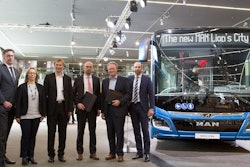

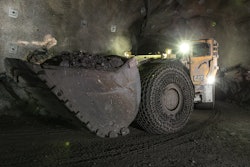



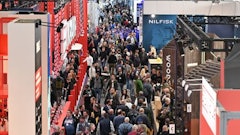

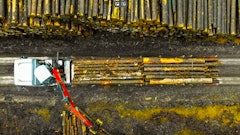

![Hcm Ax Landcros Press Release[32] jpg](https://img.oemoffhighway.com/mindful/acbm/workspaces/default/uploads/2025/11/hcmaxlandcros-press-release32jpg.mAEgsolr89.jpg?ar=16%3A9&auto=format%2Ccompress&fit=crop&h=135&q=70&w=240)

